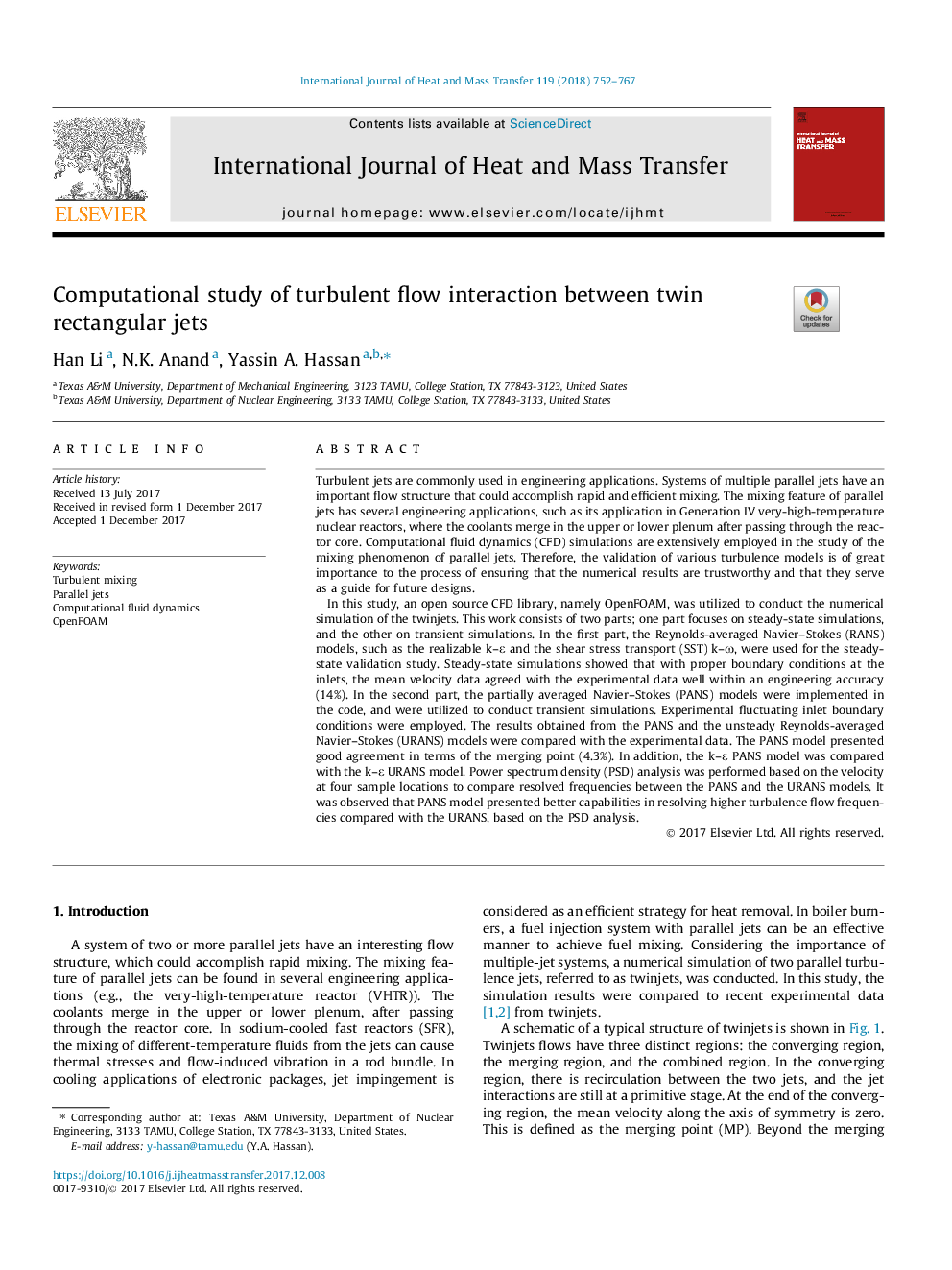| Article ID | Journal | Published Year | Pages | File Type |
|---|---|---|---|---|
| 7054748 | International Journal of Heat and Mass Transfer | 2018 | 16 Pages |
Abstract
In this study, an open source CFD library, namely OpenFOAM, was utilized to conduct the numerical simulation of the twinjets. This work consists of two parts; one part focuses on steady-state simulations, and the other on transient simulations. In the first part, the Reynolds-averaged Navier-Stokes (RANS) models, such as the realizable k-ε and the shear stress transport (SST) k-Ï, were used for the steady-state validation study. Steady-state simulations showed that with proper boundary conditions at the inlets, the mean velocity data agreed with the experimental data well within an engineering accuracy (14%). In the second part, the partially averaged Navier-Stokes (PANS) models were implemented in the code, and were utilized to conduct transient simulations. Experimental fluctuating inlet boundary conditions were employed. The results obtained from the PANS and the unsteady Reynolds-averaged Navier-Stokes (URANS) models were compared with the experimental data. The PANS model presented good agreement in terms of the merging point (4.3%). In addition, the k-ε PANS model was compared with the k-ε URANS model. Power spectrum density (PSD) analysis was performed based on the velocity at four sample locations to compare resolved frequencies between the PANS and the URANS models. It was observed that PANS model presented better capabilities in resolving higher turbulence flow frequencies compared with the URANS, based on the PSD analysis.
Related Topics
Physical Sciences and Engineering
Chemical Engineering
Fluid Flow and Transfer Processes
Authors
Han Li, N.K. Anand, Yassin A. Hassan,
